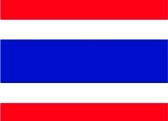All Categories
Tamron AF 28-300mm f/3.5-6.3 XR Di LD Aspherical (IF) Macro Ultra Zoom Lens for Canon Digital SLR Cameras (Model A061E)
Share Tweet








About Tamron AF 28-300mm F/3.5-6.3 XR Di LD Aspherical
Product Description Tamron AF 28-300mm f/3.5-6.3 XR Di LD Aspherical (IF) Macro Ultra Zoom Lens for Canon Digital SLR Cameras From the Manufacturer Reach out and grab distant detail, wildlife, and sports action with this amazing 11X extended range wide-to-super tele zoom that covers both full-frame and consumer DSLR (APS-C) formats allowing you to focus down to an incredible 0.49m(19.3") (1:2.9) for breathtaking close-ups. If there’s any compact zoom that does it all on digital and film SLRs, this is it. Breathtaking close-ups AF28-300mm F/3.5-6.3 XR Di LD Aspherical (IF) Macro Highlights Di II Maintaining the high performance of the previous model, Tamron's 28-300mm zoom lens now features our "Di" design, making it the ideal lens for use with both digital and film cameras. The "Di" design is achieved by applying a new optical design to its coated surfaces, and by further enhancing our already stringent quality control system. Whether you shoot film or digital, the lens provides high image quality for both platforms. When used with APS-C size digital SLR cameras, the lens provides an angle of view equivalent to approximately 44-465mm, covering the standard to ultra telephoto range with no sacrifice of quality or aperture range. Low Dispersion (LD) Low dispersion (LD) glass elements in a lens help reduce chromatic aberration; the tendency of light of different colors to come to different points of focus at the image plane. Chromatic aberration reduces the sharpness of an image, but glass with an extremely lowdispersion index, has less of a tendency to separate (defract) a ray of light into a rainbow of colors. This characteristic allows the lens designer to effectively compensate for chromatic aberration at the center of the field (on axis), a particular problem at long focal lengths (the telephoto end of the zoom range), and for lateral chromatic aberration (towards the edges of the field) that often occurs at short focal lengths (the wide-angle end of the zoom range.) Low Dispersion (LD) Glass for Greater Lens Sharpness Anomalous Dispersion (AD) for Better Color Correction Anomalous dispersion (AD) glass is a special type of optical glass that is used to achieve more precise control of chromatic aberrations, thereby enhancing overall imaging performance. Glass of this type provides an abnormally large partial dispersion ratio (amount of diffraction) for light of specific wavelength ranges (colors) within the visible spectrum. By combining AD glass having these special characteristics with elements made of normal glass having different dispersion characteristics, it is possible to control the dispersion factors of a specific wavelength. This enhanced level of control results in much lower levels of on-axis (central) chromatic aberration for telephoto lenses (or zooms used at tele-photo settings) and a significant reduction of lateral (peripheral) chromatic aber-ration for wide-angle lenses (or zooms used at wide-angle settings.) Anomalous Dispersion Extra Refractive Index Glass (XR) Extra Refractive Index (XR) glass can bend light rays at steeper angles, thereby decreasing the physical length of the lens while enhancing imaging performance by minimizing optical aberrations. This has allowed Tamron to develop a line of shorter, smaller-diameter, lighter lenses without sacrificing lens speed, and actually upgrading image quality compared to older designs. XR glass is costlier than conventional glass but it yields enhanced optical power distribution, making possible many of the outstanding and innovative lens designs that bear the XR designation. XR glass, with its superior light-bending power, makes it possible to design a short-barrel lens with the same light-gathering ability (aperture value) as a long-barrel lens—even with a smaller lens diameter. By using this principle Tamron has been able to shorten the length of the entire optical system and produce lighter, more compact lenses of the same speed, and also to provi





















